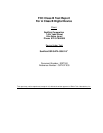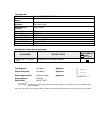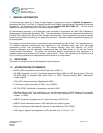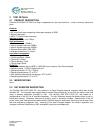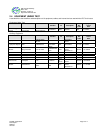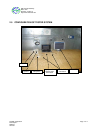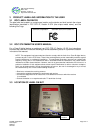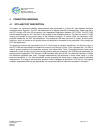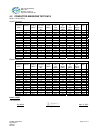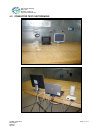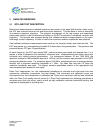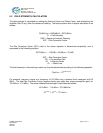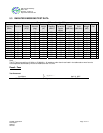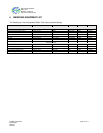
360 Herndon Parkway
Suite 1400
Herndon, VA 20170
http://www.rheintech.com
SanDisk Corporation Page 5 of 17
DoC Report
2006137
04/27/07
2 TEST DETAILS
2.1 PRODUCT DESCRIPTION
SanDisk SATA 5000 2.5” SSD is a drop-in replacement for the hard disk drive. It has no moving/ mechanical
parts.
Features
o 2.5" small form factor supporting unformatted capacity of 32GB
o 9.5mm case height
o SATA 7+15 pins combo connector
Interface to host
o Standards: SATA 1.0a 1.5Gb/s
High performance
o Host transfer rate: 150MB/s
o Internal transfer read rate: 67MB/s
o Internal transfer write rate: 47MB/s
o Random Read (4KB): 5350 IOPS
o Average access time: 0.11msec
Low power consumption
o Supply voltage: 5Vdc
o Typical read/write: 190mA
o Typical idle: 125mA
o Typical standby: 70mA
o Typical sleep: 60mA
Reliability
o Mean time between failure (MTBF): 2,000,000 hours, based on Part Stress Analysis
o Operating shock: 1,500G, 0.5msec half sine
o Operating vibration: 2.17G, 7-500 Hz
o Operating temperature: 0˚C to 70˚C
o Non operating temperature and storage: -55˚C to 95˚C
o Operating temperature: 0˚C to 70˚C
2.2 MODIFICATIONS
None
2.3 EUT EXERCISE DESCRIPTION
The SanDisk SSD SATA 5000 2.5” was installed in a Class B laptop personal computer which was running
Windows XP. The computer was programmed to transfer files continuously, to and from the device under test
using a software application provided by Dell. The SanDisk SSD SATA 5000 2.5” was tested as a
representative of the full line of available capacities. The only difference among the different sizes is the on-
board flash memory. Otherwise, there are no physical, clock, or electronic changes. Determination of the 2.5
as the “worst case” test sample was determined by SanDisk based on preliminary scanning of the devices under
test and engineering judgement that: because of the small changes between the various capacities, any
changes in emission amplitudes or EMC susceptibility would be inconsequential.



